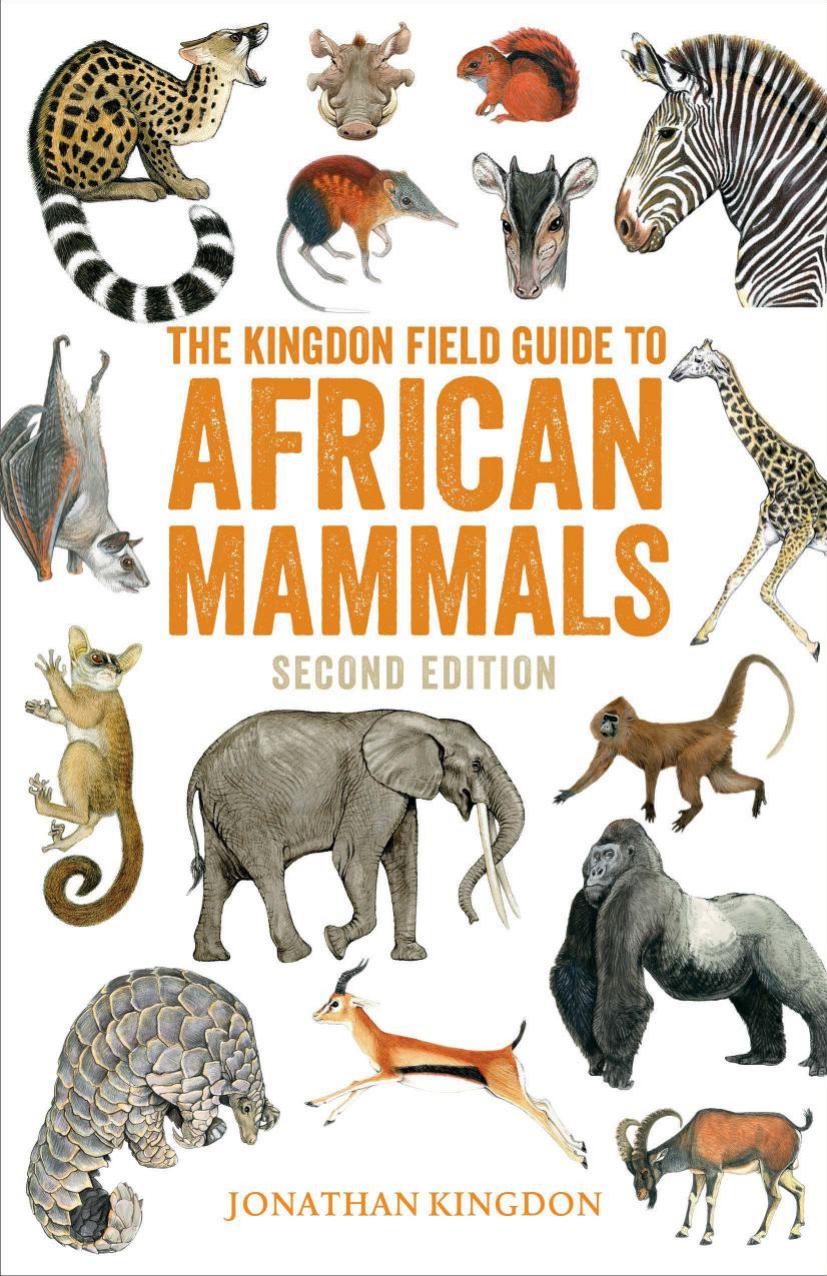The Kingdon Field Guide to African Mammals by Kingdon Jonathan

Author:Kingdon, Jonathan [Kingdon, Jonathan]
Language: eng
Format: epub, pdf
ISBN: 9781408174814
Publisher: A & C Black Publishers Ltd
Published: 2013-01-31T00:00:00+00:00
Aonyx congica
African clawless otter
Aonyx capensis
Common otter
Lutra lutra
Spot-necked otter
Lutra maculicollis
Recognition: Long-bodied, long-tailed, amphibious carnivores with dense waterproof fur, a blunt, short face and a prominent moustache of whiskers. The hindlegs (the main means of propulsion in the water) are more or less webbed. The hands may also be webbed or have dextrous, clawless fingers. Within a species there can be very considerable differences in size and clawless otters, in particular, can grow to gigantic proportions.
Genealogy: The clawless otters share certain characteristics with other large species in the Pacific and South America. All may derive from a common ancient stock. Eurasia is their most likely continent of origin but the two Aonyx species probably diverged within Africa. Lutra is likely to be a more recent arrival.
Geography: All otters are patchily distributed. They are absent in areas without permanent water, appropriate food or adequate feeding conditions. In the past high densities of crocodiles may have been a local deterrent.
Ecology: Otters have a high metabolic rate and require regular, frequent feeding on high-energy foods. Members of the clawless otter group find their food in muddy, turbid waters and have more flexible diets and hunting ecologies. The fish otters are more specialised, active hunters.
Natural history: Otters typically follow cycles of more or less tolerance toward their own species. They show some social flexibility. They are normally dispersed as solitary foragers or small family groups but form larger groups where resources permit. Otters are vocal and all species make loud attention calls as well as penetrating whistles. All use natural riverside retreats or ‘holts’ to raise their young and can, if necessary, dig or modify holes to this end.
Adaptations: African clawless otters and swamp otters are externally so similar that they are difficult to tell apart. Their teeth, however, are so different that taxonomists have treated them as separate genera or subgenera. The huge, plate-like molars of the African clawless otter are clearly adapted to crushing the shells of crabs, molluscs, turtles and catfish heads, but their shallow rooting in the skull suggests that this was a relatively late development.
Status: All otters are hunted for their fur. They are susceptible to trapping, hunting with dogs and drowning in fishnets. In some W African countries otter fur can still be found in open commercial markets. Elsewhere, local markets often provide sufficient incentive for hunting. Fish-farming is the primary cause of conflict in many areas. Nylon-net fishing is depleting otter populations in many inland waters.
Download
The Kingdon Field Guide to African Mammals by Kingdon Jonathan.pdf
This site does not store any files on its server. We only index and link to content provided by other sites. Please contact the content providers to delete copyright contents if any and email us, we'll remove relevant links or contents immediately.
Sapiens: A Brief History of Humankind by Yuval Noah Harari(13071)
The Tidewater Tales by John Barth(12038)
Do No Harm Stories of Life, Death and Brain Surgery by Henry Marsh(6341)
Mastermind: How to Think Like Sherlock Holmes by Maria Konnikova(6249)
The Thirst by Nesbo Jo(5791)
Why We Sleep: Unlocking the Power of Sleep and Dreams by Matthew Walker(5655)
Sapiens by Yuval Noah Harari(4550)
Life 3.0: Being Human in the Age of Artificial Intelligence by Tegmark Max(4518)
The Longevity Diet by Valter Longo(4451)
The Rules Do Not Apply by Ariel Levy(3913)
The Immortal Life of Henrietta Lacks by Rebecca Skloot(3832)
The Body: A Guide for Occupants by Bill Bryson(3813)
Why We Sleep by Matthew Walker(3779)
Animal Frequency by Melissa Alvarez(3759)
Yoga Anatomy by Kaminoff Leslie(3709)
Barron's AP Biology by Goldberg M.S. Deborah T(3636)
The Hacking of the American Mind by Robert H. Lustig(3586)
All Creatures Great and Small by James Herriot(3524)
Yoga Anatomy by Leslie Kaminoff & Amy Matthews(3402)
